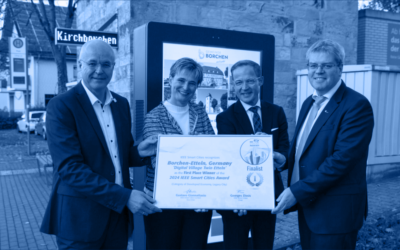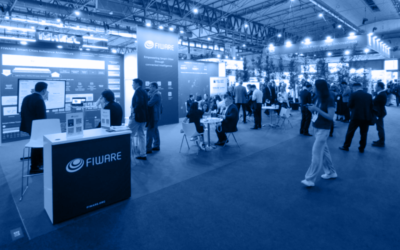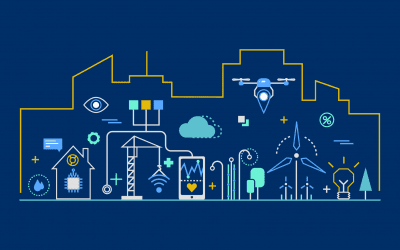The following post has been written by Sergio García, architect of FIWARE's Context chapter. We would like to thank him for his collaboration and willingness to participate.
Most of the European cities are undergoing a process of transformation towards a new model of services and infrastructures management and of interaction among citizens. Smart Cities, the Cloud and the Internet of Things (IoT) are some of the factors enabling this transformation.
The first infrastructures deployed in Smart Cities have been developed with proprietary or vertical solutions (mobility and traffic management, among others) and, although they solve specific problems, they cause two inconveniences: on the one hand, they are hardly replicable and, on the other hand, they do not facilitate the creation of global ecosystems for entrepreneurs to develop applications and services for multiple cities.
As an alternative for these proprietary solutions, FIWARE is born as the result of a public-private collaboration between the European Commission and the private sector. This open platform, which provides a set of tools for different functionalities, is an innovation ecosystem for the creation of new applications and Internet services. It is especially useful in terms of Smart Cities, as it ensures the interoperability and the creation of standard data models.
Let’s now focus on its technical aspects.
The platform provides enhanced OpenStack-based Cloud capabilities and a set of tools and libraries known as Generic Enablers (GEs) with public and open-source specifications and interfaces. These FIWARE GEs are distributed in different technical chapters and provide different capacities. For example, the Internet of Things chapter provides tools to connect sensors and other devices; while the applications’ chapter offers powerful business intelligence tools and for the development of interfaces; or as the chapter for Advanced Interfaces allows to implement functionalities related to virtual reality, augmented reality or 3D.
FIWARE Lab is the experimentation environment where technology providers, solution developers and their stakeholders and data providers (cities) can identify problems, design and build solutions on the platform and experiment with them.
Another pillar of the FIWARE architecture is context management. Smart applications and services for cities do need information about everything happening at every moment. FIWARE provides a mechanism to generate, collect, publish or query massive context information and use it for applications to react to their context. This is a complex process, as this information may come from different sources: systems, mobile apps’ users, sensor networks, etc. It is our Context Broker, through a REST implementation of API OMA NGSI, which allows to shape and access it, whatever the source is.
The use and management from data coming from “Things” (i.e. sensors, actuators and other devices) is also a complex process, as there are many different protocols in the IoT sphere, but FIWARE provides a set of GEs allowing to access the relevant information through only one API (NGSI). It not only allows to read this sensor information, but also to act on some elements. Therefore, Context Broker is an essential part of the architecture to collect data, analyse them on real time, consult archives and their analysis, as well as to publish them as open data from a city. On the other hand, other functionalities such as business intelligence, web interfaces and advanced interfaces allow the creation of very powerful applications and solutions.
FIWARE becomes then a fundamental pillar in the infrastructures of Smart Cities, as the different GEs build an architecture that can serve most of their needs. More than 15 European cities and some Spanish cities such as Málaga, Valencia, Seville, Santander or Lleida are already working and experimenting with this platform.
Among other initiatives to adopt FIWARE as Smart City platform, 31 cities from six European countries (Spain, Finland, Denmark, Italy, Portugal and Belgium) and from Brazil have recently announced at CeBIT 2015 (Hannover) the initiative “Open & Agile Smart Cities”, which is based on four main strategic elements: adopting common APIS accessing data from cities through NGSI, adopting a common platform for the publication of data such as CKAN, working on a driven-by-implementation basis and on building applications allowing to reuse, improve and define data models for different vertical markets in cities and to prove the interoperability in a city and among different cities. To that purpose, existent initiatives and models like CitySDK will be used.



